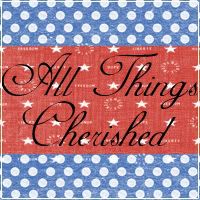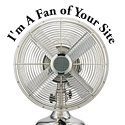We all have the same amount of hours in the day. It doesn't matter what you need or want to get done or how noble your intentions are. Each of us only has 24 hours in a day--for good or bad, to waste or to use efficiently.We will see on TV or read in the paper about people who give generously of their time to help others. Examples are people who volunteer to serve food to the homeless or rock those babies to sleep who have no one to love them.
Often, these are people who have families, careers, and commitments. What makes them special is that they have managed to figure out a way to make time in order to give their time and themselves.
Saving time requires some effort. How do you make time?
Amber Alert
Save an Hour, Give an Hour
Thought of the Day - 5/16/09
Look at a man in the midst of doubt and danger and you will learn in his hour of adversity what he really is.
~~ Lucretius, Roman philosopher ~~
Fibromyalgia Resources
Find a new place to learn, share your story, and do something about your fibromyalgia:
- Fibromyalgia Health Center
- Fibromyalgia Health Manager
- National Fibromyalgia Association
- Fibromyalgia Focused
- Fibromyalgia at Medline Plus
- Fibromyalgia Support Center
- Fibromyalgia Network
- About Fibromyalgia and Chronic Fatigue Syndrome
- Fibromyalgia and Fatigue Centers, Inc.
- Patients Like Me Fibromyalgia Community
I hope you liked the articles and resources I shared this week in honor of National Fibromyalgia Day (12th).
Bodywork for Treating Fibromyalgia
Have you had or considered bodywork for treating fibromyalgia (FMS) or chronic fatigue syndrome? Are you asking, "What in the world is bodywork?"
The term bodywork is used for any therapeutic or healing methods that involve touching or physical manipulation. Chiropractic and physical therapy fall into this category and are widely used for FMS, but bodywork also covers a lot of alternative treatments, including massage, Rolfing, the Bowen Technique, and Reiki.
You can find claims about each of the alternative forms of bodywork as a treatment for FMS or Chronic Fatigue Syndrome, but some have more scientific backing than others.
To help you make informed decisions about your treatment options, continue reading.
What is Bodywork?
The term bodywork is used for any therapeutic or healing methods that involve touching or physical manipulation. Bodywork encompasses a wide range of alternative-medicine techniques, including all types of massage, Rolfing, the Bowen Technique, and Reiki.
Doctors usually recommend bodywork as a complementary treatment, not as the only treatment. While you may want to try alternative treatments your doctor doesn't recommend or endorse, you should include him/her in your decisions and report back to your doctor on your experience with the treatment.
Whether bodywork will help you with fibromyalgia depends both on the form of bodywork and on your specific symptoms.
What is Massage Therapy?
First, you need to understand the difference between Swedish massage, which is primarily for relaxation, and therapeutic massage, which is aimed at helping the body function better. A clinical massage therapist uses techniques such as myofascial release and neuromuscular therapy to get muscles and connective tissues to relax and function properly.
Research shows therapeutic massage can help people with FMS if it's the correct type of massage for the specific symptoms. Experts say massage is especially useful for people who can't exercise because it has similar effects on your tissues and circulatory system.
Make sure you're going to a licensed massage therapist (LMT) and be sure to discuss any other pain conditions or health problems you have.
Massage as a Fibromyalgia Treatment
Because FMS causes pain and makes your body extremely sensitive to touch and pressure, you probably won't be able to tolerate any kind of deep-tissue massage. Open lines of communication are vital when it comes to how much pressure the massage therapist can put on your muscles. Make sure your massage therapist is familiar with the gentle touch required for treating FMS or is willing to do some research on it.
After a massage, you're likely to feel more relaxed and get a better night's sleep, which in turn can help alleviate your symptoms.
What is Rolfing?
Rolfing is a form of deep-tissue work with the goal of bringing segments of the body into proper alignment. It's based on the belief that the fascia (fibrous connective tissue that covers muscles and runs throughout the entire body) can get stiff, shortens, and becomes less elastic, and thereby lead to a lot of musculoskeletal problems.
Rolfing as a Fibromyalgia Treatment
Rolfing generally involves high amounts of pressure and very deep tissue work, so while some practitioners may claim it's beneficial for fibromyalgia, most experts agree that this kind of bodywork will cause huge amounts of pain for people with FMS.
What is the Bowen Technique?
The Bowen Technique involves gentle rubbing techniques that practitioners say send impulses to the brain and nervous system that alleviate pain, help relax your muscles, restore normal movement to joints and connective tissues, and increase blood flow. The underlying theory is similar to acupuncture, and several Bowen moves involve acupuncture points that are believed to bring your body's energy in balance. When the treatment is effective, relief is often immediate.
The Bowen Technique as a Fibromyalgia Treatment
In a study conducted by Jo Anne Whitaker, MD, of the American College of Rheumatology, almost all FMS participants had some relief, which lasted from a few days to several weeks. After several sessions, a few people reported a complete remission of FMS symptoms. Benefits can include better sleep, less neck pain, better balance, and less dizziness.
What is Reiki?
Reiki is a Japanese technique for stress reduction and relaxation that also promotes healing. It is administered by "laying on hands" and is based on the idea that an unseen "life force energy" flows through us and is what causes us to be alive. If one's "life force energy" is low, then we are more likely to get sick or feel stress, and if it is high, we are more capable of being happy and healthy.
Reiki as a Treatment for Fibromyalgia
Reiki is a Japanese technique based on the belief that spiritual energy, properly channeled, can heal the physical body. It can be done through light touch or even at a distance. Reiki is most often used for stress reduction and relaxation but also has many other applications. Practitioners say it can help with pain, sleep, muscle tension, anxiety, depression, circulation, and poor immune function. Some practitioners recommend against using Reiki on anyone with a psychological disorder.
Researchers from the University of Washington and Seattle's Harborview Medical Center, published in the Fall of 2008, studied Reiki as a fibromyalgia treatment and found it was not effective at reducing symptoms, using either touch or distance methods. The researchers recommend more research before Reiki is recommended as a fibromyalgia treatment.
Some practitioners and patients say they've seen results from Reiki. As with Bowen treatments, risk is low.
What types of bodywork have helped you? Have you tried any that didn't work? Share your experiences here.
Sources:
Cathy Wong, About.com: Alternative Medicine, Rolfing, 2007.
Rolf Institute of Structural Integration, About Rolfing, 2007.
Ruth Werner, Lippincott Williams, & Wilkins, A Massage Therapist's Guide to Pathology, 3rd Edition.
Julie Deardorff for The Chicago Tribune, Massage Therapy Rubs Sufferers the Right Way, 2005.
http://www.reiki.org/
Adapted from Adrienne Dellwo, http://chronicfatigue.about.com.
Neurotransmitter Glutamate Tied to Fibromyalgia Pain
Another neurotransmitter is joining the ranks of those that are not quite right in people with fibromyalgia (FMS) - but while serotonin and norepinephrine levels are too low, glutamate is too high.
In a recently published study, researchers at the University of Michigan Health Systems have discovered that pain goes down when they reduce levels of glutamate in an area of the brain. Led by well-known FMS researcher Daniel Clauw, MD, they say this information could be useful for finding new medications and monitoring their effectiveness.
When glutamate moves through your brain, it makes cells more active. After researchers discovered people with fibromyalgia had a lot of extra activity in the area of the brain called the insula, they theorized that glutamate could be involved.
To test the theory, they used a brain-imaging test called proton magnetic resonance spectroscopy (H-MRS) before and after acupuncture or "sham" acupuncture, because acupuncture is proven effective at inactivating areas of the brain.
After four weeks of treatment, both pain and glutamate levels in the insula were lower, suggesting glutamate plays a part in FMS and could be used as a biological indication of how severe it is. This was a small study, so the research team is calling for more research to verify the role of glutamate.
Think how it would change things to have a biological test showing how severe your FMS is! Do you think it would help people get disability? Would it help you convince your friends and family that you're really sick? Will this discovery lead to new drugs? Does this make you think more seriously about acupuncture?
Adapted from Adrienne Dellwo, http://chronicfatigue.about.com.
10 Terms Everyone with Fibromyalgia Should Know
In spite of fatigue and fibro fog, it's important for us to educate ourselves about fibromyalgia (FMS) in order to understand what's going on in our bodies and learn how to best manage our symptoms.
Below are 10 terms everyone with fibromyalgia should know. Just click on the term to get a definition and learn what it means for your condition. This list certainly isn't complete, but it's a good place to start.
- Central Sensitization
- Cortisol
- Flare-Up
- Glutamate
- HPA Axis
- Melatonin
- Norepinephrine
- Serotonin
- Substance P
- Tender Points
Adapted from Adrienne Dellwo, http://chronicfatigue.about.com.
Who Will End Up Treating Fibromyalgia?
A shift in thinking is underway. With all the research showing fibromyalgia isn't rheumatologic but is actually a neurologic disorder, some doctors say we should no longer see rheumatologists.
It makes some sense - rheumatologists specialize in joints, bones, and muscles. They're not experts on how the brain perceives and processes pain. Neurologists are.
Will neurology welcome us with open arms? Are neurologists thinking how nice it would be to take on the challenge of fibromyalgia? Will their waiting lists accommodate a huge influx of people?
Many of us have had bad luck with general practitioners or internists. Do you suppose they're busily educating themselves so they can diagnose and treat us effectively?
Call me a cynic, but I'd say, not likely. Are we going to get stuck with primary care providers who don't even believe we're sick? Are we going to end up without a "home" as the medical community takes us out of the rheumatologic category without providing a viable alternative?
Adapted from Adrienne Dellwo, http://chronicfatigue.about.com.
Thought of the Day - 5/14/09
Hope is a powerful thing, and I've been able to hold on to enough of it to make a real difference. Blue periods can be tough, but they always result in more self-awareness and contentment.
Thought of the Day - 5/13/09
There are no mistakes. Do what you want. You can always change your mind.
~~ Maira Kalman ~~
What Weird Things Help?
Treating Fibromyalgia & Chronic Fatigue Syndrome - What Weird Things Help?
As varied as symptoms are when it comes to fibromyalgia and chronic fatigue syndrome one thing is consistent across the board: these conditions are downright weird.
So I ask, does it take weird treatments to deal with a weird disease? For me, some weird things have made a big difference. They're all at least somewhat supported by science, but I hesitate to tell "healthy" people about them for fear of seeming crazy (or, crazier, depending on their point of view.)
Here's my list of off-the-beaten-track treatments:
- Full-spectrum light bulbs (for circadian clock issues)
- Cayenne fruit supplements (a natural pain killer, but not for those with IBS!)
- Dark chocolate (to raise serotonin levels)
As you can tell, my inability to tolerate a lot of medications has made me get creative What weird things work for you? Post a comment here to let us know so we can all be weird together.
Acupuncture for Treating Fibromyalgia
Massage & Other Bodywork for Treating Fibromyalgia
Experimental Protocols for Treating Fibromyalgia
Adapted from Adrienne Dellwo, http://chronicfatigue.about.com.
Space Saving Tips for Kids' Rooms
Between all of the supplies, equipment, and accessories needed for schoolwork and extracurricular activities, it’s easy for your child’s room to become cluttered from time to time. An organized space is the key to focusing on the task at hand which is why it’s essential to find a few space saving storage solutions that will encourage a clean room for kids.
If you are just in the beginning stages of furnishing a bedroom, consider multifunctional bedroom sets that provide an opportunity for extra storage space. Drawers installed within a kids' bed frame are perfect for storing clothing or playtime materials while a bookshelf or compartmentalized headboard doubles as a storage unit for textbooks, toys, or knickknacks.
If your child's room provides enough space for a study or activity center, it’s best to find a desk or table that is equipped with multiple drawers or with an installed shelving unit which is great for holding arts & crafts and school supplies. Open storage bins, foldable baskets, or toy chests can store younger children’s toys, games, puzzles, or DVD collections while staying accessible to kids throughout the day. You can even color code baskets for specific activities such as reading materials, coloring books, games, and stuffed animals in order to make it easier to track down your kid’s favorite toy.
Better Homes and Gardens recommends taking advantage of every square inch of your children’s bedroom space by turning small corner spaces into a workspace and shelving area with L-shaped student desks or corner bookcases.
While you’re on the hunt for the perfect storage solution for your kid’s bedroom, it’s never a bad idea to start with a few refurbished pieces found in your own home or at a local thrift store. Entertainment center armoires can easily be turned into a bookshelf or set of storage drawers with a few simple DIY tweaks. You can always organize this open space with extra bins or baskets in order to create additional toy compartments. As long as you incorporate a handful of simple clutter-free solutions to your children’s space, everyone can look forward to a fun and organized atmosphere that functions well as a bedroom, playroom, and study center.
For some awesome kid-friendly furniture, check out All Children's Furniture.
Thought of the Day - 5/12/09
Asking for help does not make you a weak person! So before things get to the panic phase, you need to seek the assistance that you know you need. Friends who have been there before are waiting for you to ask for help, and they have some wise advice you need to hear. Ask for what you need today. No negative assumptions will be made -- your reputation is stronger than you think! Expressing your needs won't make you needy. It will make you feel empowered.
I have trouble with this. I feel if I ask for help than I am less of a woman, less of a mother. I know this doesn't make sense but it is a true battle within myself.
Do you have trouble asking for help?
Fibromyalgia Awareness Day
National Fibromyalgia Awareness Day aims to increase awareness of FM and provide support to those coping with the illness. To view more information about the event, go to Bloggers Unite.
Do loud noises bug you? I mean REALLY bug you, a lot more than they did before you had fibromyalgia (FMS)? According to a new FMS study published in the February issue of the Journal of Pain, the more sensitive you are to pressure on your body, the more sensitive you likely are to sound.
Why is that important? It supports the theory of central sensitization, which is believed to be present in both FMS and Chronic Fatigue Syndrome. This means that we have major differences in how our central nervous systems processes not just pain, but all kinds of things. That helps us understand the condition better and may help broaden the view of our doctors. Of course, a huge part of our treatment has to be pain management - if we can't get on top of that, it's hard to make any progress at all - but doctors need to look beyond pain to the other array of symptoms we have so they can help us manage this more effectively. Also, if we're more aware of it, we can use that information to make better choices about our environment.
If you look at our symptoms, central sensitivity explains a lot. We tend to be sensitive to medications, changes in diet, temperature fluctuations, chemicals... just about everything to which the human body can be sensitive.
Personally, this study doesn't surprise me one bit. When I was still able to work full-time, I had to drop my kids off at the babysitters a few days a week. Some mornings, especially during flare-ups, I'd open that door and the noise would hit me in the face like a physical blow. My pain would instantly escalate, and sometimes I'd just about panic and want to run away. By the time the kids were both settled in and I was back in the car, I'd be shaking, aching. and sick to my stomach.
Fibro Pain All Over Your Body? Treat Your Nose!
Did you know that more than 80% of people with fibromyalgia (FMS) have chronic sinus problems? When your body's wracked with pain, you're tired and lost in brain fog, a stuffy nose might seem like the least of your problems.
Research shows, however, that treating your sinus problems can help alleviate a lot of your FMS symptoms, and can even help you lose weight.
Sound strange? Here's why researchers say it works: yeast problems are common for us, and chronic sinusitis just happens to be one of the main symptoms of yeast overgrowth. The other is spastic colon, which causes gas, bloating, diarrhea and/or constipation. Does that sound familiar? If so, you'll probably want to ask your doctor about yeast overgrowth.
According to Mayo Clinic researchers, your immune system tries to fight the yeast, and that constant immune response may be a cause (or partial cause) of central sensitization, which is the mechanism believed to cause fibromyalgia symptoms (and many chronic fatigue syndrome symptoms as well.)
If you are participating in National Fibromyalgia Day by writing a post, please sign Mr. Linky below.
Adapted from Adrienne Dellwo, http://chronicfatigue.about.com.
In honor of National Fibromyalgia Awareness Day, I will be sharing several articles, stories, and resources throughout the week.
Do One Nice Thing
My friend, Debbie, is not fond of acting, but she made a video for a special reason.
She made a bet with ten friends: Debbie would be in a video if they'd donate ten cents for every person who watched it. The cause: Feeding America, the food bank network. Her friends agreed. The dimes add up quickly, 10 people x $10 = 1,000 pounds of groceries. All you have to do is watch the video. Then share the video via email or blogs. More viewers = more groceries. In gratitude for Debbie's new book, Debbie is donating a dime to Feeding America for every view, up to $100.
Just click: http://www.youtube.com/watch?v=EVi0z2eMAGw
My Favorites
Favorite Food:
My mother's pot roast and mashed potatoes, my friend Jonel's potato salad.
Favorite Drink:
My all time favorite is Mt Dew. My favorite alcoholic drink is a Strawberry Daiquiri which I only have like once a year. In the winter, I love my hot chocolate.
Favorite Chocolate/Candy:
Dove chocolate, peanut butter meltaways.
Favorite Season:
Autumn and Spring.
Favorite TV Program:
CSI, CSI: Miami, Criminal Minds, Grey's Anatomy.
Favorite Movie:
American President, Pretty Woman, Santa Clause, Santa Clause II, Santa Clause III.
Favorite Song:
I Can Only Imagine by Mercy Me, Mary, Did You Know? by Mark Lowry.
Favorite Color:
Blue, then red.
Favorite Holiday Destination:
My family room.
Favorite Hobby:
Scrapbooking, Christmas decorating.
Favorite Day of the Week:
Monday.
Favorite Animal:
Chihuahua, penguin, and platypus.
Favorite Actor:
Nicholas Cage, John Travolta.
Favorite Actress:
N/A.
Share your favorites on your blog then come back and share the link below via Mr. Linky.
Thought of the Day - 5/11/09
You always pass failure on your way to success.
~~ Mickey Rooney ~~
Isn't that the truth? I have to constantly remind myself that my failures actually mean I've learned at least one thing or how not to do something.
Make Me Laugh Monday - Avoidable Exposure
A man is getting into the shower just as his wife is finishing up her shower, when the doorbell rings. The wife quickly wraps herself in a towel and runs downstairs.
When she opens the door, there stands Bob, the next-door neighbour. Before she says a word, Bob says, "I'll give you $800 to drop that towel."
After thinking for a moment, the woman drops her towel and stands naked in front of Bob, after a few seconds, Bob hands her $800 and leaves.
The woman wraps back up in the towel and goes back upstairs. When she gets to the bathroom, her husband asks, "Who was that?"
"It was Bob the next door neighbour," she replies.
"Great," the husband says, "did he say anything about the $800 he owes me?"
Join me in the fun and giggles of making Mondays a better day by sharing some laughs. Add your link to your Make Me Laugh Monday post to Mr. Linky below. (All links not leading directly to your post will be deleted.) All posts should be funny in some way. Yes, this is up to interpretation. Ideas include riddles, funny family stories, comic strips, jokes, silly graphics, funny lyrics, hilarious photos, etc. Please don't leave me to snicker all alone. I'm sure YOU have something funny to share.
Before I Was a Mom
Before I was a Mom,
I never tripped over toys
or forgot words to a lullaby.
I didn't worry whether or not
my plants were poisonous.
I never thought about immunizations.
Before I was a Mom,
I had never been puked on.
Pooped on.
Chewed on.
Peed on. I had complete control of my mind
and my thoughts.
I slept all night.
Before I was a Mom,
I never held down a screaming child
so doctors could do tests.
Or give shots.
I never looked into teary eyes and cried.
I never got gloriously happy over a simple grin.
I never sat up late hours at night
watching a baby sleep.
Before I was a Mom,
I never held a sleeping baby
just because I didn't want to put her down.
I never felt my heart break into a million pieces
when I couldn't stop the hurt.
I never knew that something so small
could affect my life so much.
I never knew that I could love someone so much.
I never knew I would love being a Mom.
Before I was a Mom,
I didn't know the feeling of
having my heart outside my body.
I didn't know how special it could feel
to feed a hungry baby.
I didn't know that bond
between a mother and her child.
I didn't know that something so small
could make me feel so important and happy.
Before I was a Mom,
I had never gotten up in the middle of the night
every 10 minutes to make sure all was okay.
I had never known the warmth,
the joy,
the love,
the heartache,
the wonderment
or the satisfaction of being a Mom.
I didn't know I was capable of feeling so much,
before I was a Mom.
Thought of the Day - 5/10/09
The happiness of your life depends on the quality of your thoughts.
Happy Mother's Day!
A mother is she who can take the place of all others but whose place no one else can take.
~~ Cardinal Mermillod ~~
You are irreplaceable!
On behalf of your children, we thank you for the irreplaceable role of mother you have played this year.
Happy Mother’s Day!



































